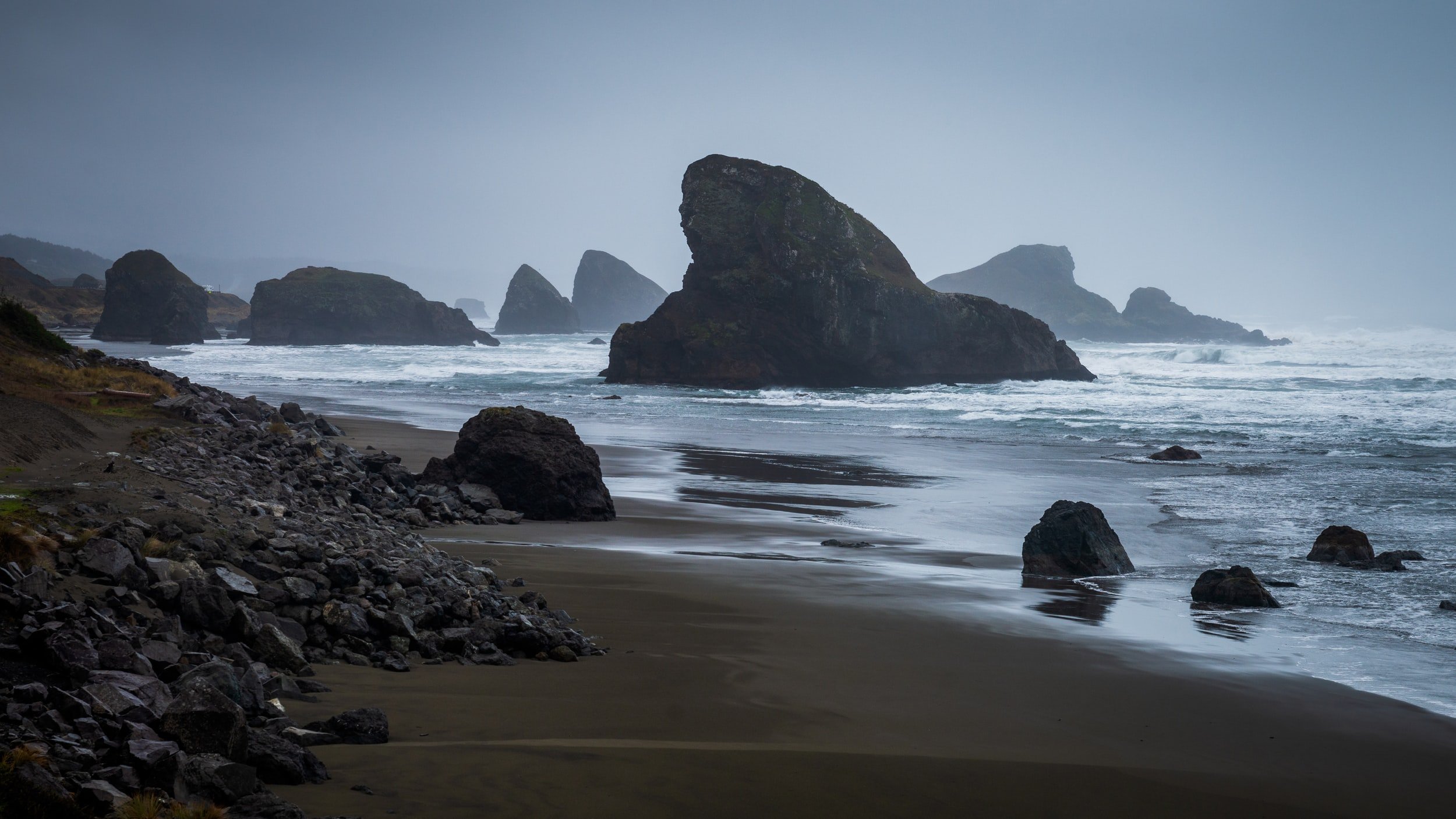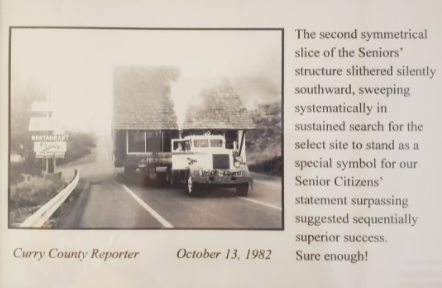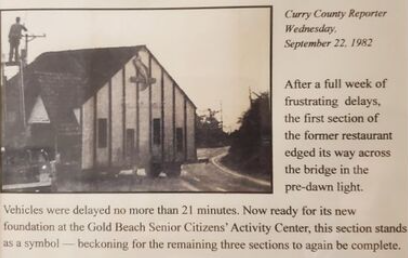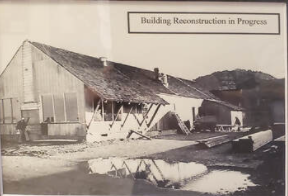
Beginnings…
In the 1950's, the Gold Beach 'Senior Citizen's Club' met informally, gathering for pot lucks, social events, and coordinating a meal-site at the fairgrounds.
In 1965, they officially organized with written bylaws and elections for officers.
They first met in the Soroptimist building, later moving to Eagle's Hall - Veteran's Hall.
In 1969, meetings were held at the VFW Hall.
The nuisance of being shuffled around began the desire to find their own permanent HOME. This topic was first recorded in 1970 on April 28th, but was tabled for further discussion.
The seniors took a rather important step in 1975, establishing themselves as a Nonprofit Corporation in the state of Oregon.
Meanwhile, meals were being served on alternating days at the fairgrounds and Riley Creek Elementary.
The need to accommodate a reliable and consistent nutrition program became priority.
In 1982, They began a building fund as well as searching for a location.
Donation of Land
Byrell E.'Dick' Fisk came to Gold Beach in 1917 and married a local girl, Anna Charlotte 'Lottie' Gauntlett.
Together they owned and operated several movie theaters, including the CHINOOK in Gold Beach.
Their electric generator allowed for the expansion of power to homes at the north-end of town, while also growing Easter lilies and owning a mill.
Although they never had children, and Lottie died in 1963, Dick still remained heavily involved in the community for another 20 years.
In 1982, Fisk resolved the Seniors' search for a permanent location by donating the land to use as their building site.
The Building
In 1935, the Rogue River was officially closed to commercial salmon fishing, which gave way for a booming sport fishing industry. Soon after, three sport-fishing resorts were built in Wedderburn. In 1941, Scott's White Cedar Lodges was constructed by Thomas Vance Scott Sr., directly west of the Patterson Memorial Bridge.
The main structure contained a large lobby that was dominated by a stone fireplace, a restaurant, kitchen, offices, and seven bedroom units with private baths, along with a row of rental cottages.
From 1942-1944, the lodge was selected to serve as the Gold Beach base for the United States Coast Guard Beach Patrol during WWII, quartering more than a hundred men at one point. Kennels for their guard dogs were built on the surrounding hillsides. The USCG Beach Patrol, aka, 'Sand Pounders', were assigned to traverse the beaches north and south, day and night, rain or shine, until the threat of a Japanese invasion was over.
Nine years after the war, the building was sold and renamed Del Rogue Resort.
Building Donation
In 1959, Louis R. 'Jot' and Franke Giottonini discovered Gold Beach while on vacation from Stockton, California. They purchased what we would come to know as Jot's Resort today.
In 1966, Jot's son, Lou Giottonini III, and his wife, Mary Ann purchased the Del Rogue Resort, while operating independently for the next three years. 1969, Jot and Lou formed a partnership and consolidated business interests.
Ten years later, Jot and Franke retired, selling their business to interest to Lou and Mary Ann. While in the midst of forging ahead with the development of Jot's Resort, they purchased the Rod N' Reel restaurant, which in turn closed the Del Rogue restaurant permanently. Needing to have the building removed or demolished, to make room for Jot's Resorts main office, pool, meeting space and motel rooms, Lou made the Seniors an offer.
" If you can move it, you can have it. "
And with a hand shake, Lou and Mary Ann donated the building that would become the home for the Gold Beach Senior Center. Which is now, the Gold Beach Community Center.
Building Relocation
In September of 1982, the building was cut into four, almost equal, sections. Each section was taken across the bridge at separate times, blocking traffic over the bridge each time. This process was long and slow. Consisting of one man, slowly walking backwards to direct the driver. The last section scantly cleared the bridge towers by a mere foot on either side. By October, all 4 sections were anchored on their new foundation.









